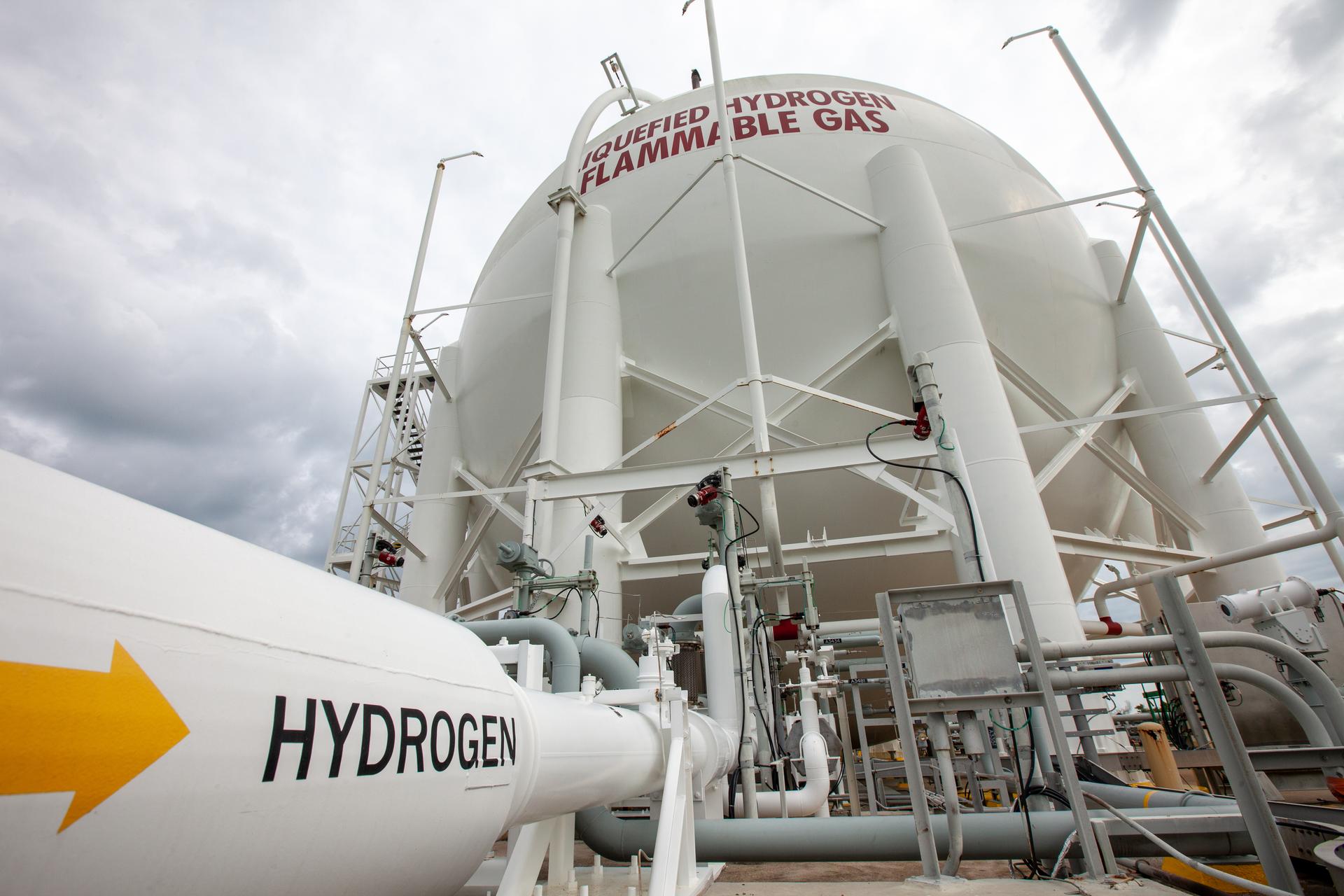
For more than two decades, the Cryogenics Test Laboratory (CTL) team at Kennedy Space Center in Florida has provided critical support and expertise to NASA and the global cryogenics community.
A recent consortium, including NASA, Shell, McDermott’s CB&I Storage Solutions, GenH2, and the University of Houston was selected by the U.S. Department of Energy (DOE) for its large-scale LH2 storage project. NASA’s participation in the project comes from an interagency agreement with the DOE.
Hydrogen is rapidly gaining traction as a popular alternative to carbon-based fuels. In order to use hydrogen on a global scale, it will have to be liquified so it can be efficiently and economically transported around the world. Part of this global LH2 supply chain will involve constructing tanks large enough to store massive quantities, something with which engineers at Kennedy are well acquainted.
Kennedy has had the largest LH2 storage tanks in the world since the 1960s, when they were initially built to store the propellants that fueled the Saturn V Moon rocket. Now, NASA has constructed a new tank capable of holding 1.25 million gallons of LH2 – roughly 50% larger than its 1960s predecessors – to support the agency’s Artemis missions to the Moon and Mars. The storage tanks needed to help facilitate a global LH2 supply chain, however, will have to be substantially larger, and the CTL team will play an integral role in the design and testing to make that happen.
“NASA has cumulative experience with operations, safety, maintenance, design of systems and technology development, positioning us to help foster this new hydrogen future,” said Adam Swanger, principal investigator at Kennedy’s Cryogenics Test Lab.
The $12-million, three-year project involves three primary objectives: create a lab instrument to test insulation at LH2 temperatures, conceptualize and design a large-scale LH2 tank, and then build a small-scale LH2 tank to validate the insulation systems, designs, and manufacturing methods. The CTL at Kennedy already has a standardized suite of instruments, called cryostats, which are used to test thermal insulation systems at liquid nitrogen temperatures. LH2, however, is much colder, so the team will work with GenH2 to design a new cryostat capable of characterizing the performance of insulation systems at operational conditions for LH2. In addition to the challenge of working at colder temperatures, LH2 is flammable, and there is no access to small quantities available for testing, so the team will have to develop a way to create small batches of LH2.
The DOE believes NASA’s long-standing expertise and experience working with cryogenic fluids renders the agency the perfect fit for this project. “NASA is one of the only organizations in the world with significant experience in handling large amounts of LH2,” said Dr. Ned Stetson, Hydrogen Technologies program manager at the DOE’s Hydrogen and Fuel Cell Technologies Office. “They have strong expertise in refrigeration and cooling, as well as techniques to minimize boil-off losses in cryogenic fluid storage vessels. NASA’s involvement in this project will be invaluable for the team’s success.”
“Harnessing LH2 is challenging, but there are tremendous benefits, so we are trying to do our part to help make this global initiative safe, affordable, and ultimately, successful,” Swanger said.



























